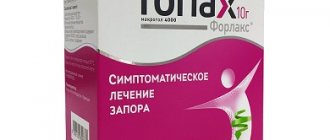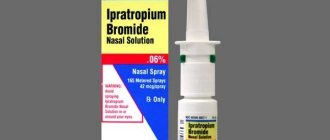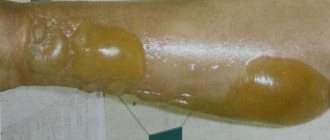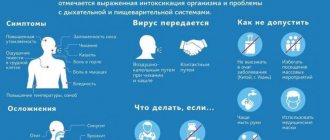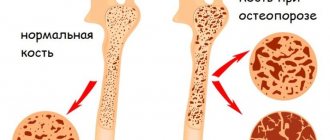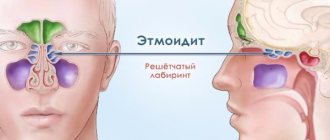An antagonist of histamine receptors in the inner ear, indirectly acting on histamine receptors in the vestibular nuclei of the brain, the original drug - Betaserc - has been presented on the Russian pharmaceutical market for a long time. The effectiveness of the drug has been proven by preclinical and clinical studies. Reviews about Betaserk at this stage were carefully studied and classified. The producing countries are the Netherlands and France, which have fairly high quality criteria for medical products.
Betaserc is prescribed for the correction of vestibular disorders. The drug not only improves microcirculation of the inner ear, but also equalizes the pressure of the endolymph of the cochlear apparatus.
Increased blood flow is also noted in the basilar arteries, and the effect on the brain stem is to improve the transmission of excitation through nerve cells and fibers. Unlike nootropics, it does not affect the blood coagulation system and smooth muscle fibers of blood vessels.
Side effects are few. The drug is available in the form of tablets and solution. According to the instructions for use, Betaserc is taken two to three times a day and, according to patient reviews, this dose is enough to significantly improve their well-being.
What does Betaserc help with, according to reviews and instructions:
- Dizziness;
- Noise, ringing, whistling in the ears;
- Hearing loss (hearing loss).
Reviews from patients who took the drug Betaserc indicate a positive effect on the relief of the above symptoms. Reviews from patients experiencing both dizziness and hearing impairment indicate the effectiveness of Betaserc in relation to both symptoms.
Reviews from patients taking Betaserc tablets for dizziness indicate a significant reduction in symptoms after a few days of taking the drugs.
The Yusupov Hospital treats patients with neurological pathology and, when using drugs, priority is naturally given to original ones. Reviews from patients at the Yusupov Hospital about Betaserk are similar to reviews from doctors. Instructions for use of Betaserc, according to reviews from doctors and patients, are written in an accessible manner, convenient dosage, minimum side effects.
Reviews from patients about the side effects of Betaserc boil down to symptoms:
- From the gastrointestinal tract - dyspepsia, nausea, discomfort. According to patient reviews, the side effects of Betaserc on the digestive system can be stopped if the drug is taken with meals.
- Allergic reactions in the form of a rash or hives, itching is possible. Reviews from doctors and patients about Betaserk rarely mention this side effect.
The drug Betaserk, according to reviews from patients at the Yusupov Hospital, has established itself as a high-quality and effective remedy.
Why was I prescribed a nootropic drug?
You probably often asked your friends the question: “Which ear is ringing in my ear right now?” For most people, extraneous tinnitus is not a problem because it goes away quickly. I had ringing several times a day. It’s enough to overexert yourself a little or get nervous, like annoying sounds here and there. I got tired of enduring it, and I went to see a doctor.
It turned out that I had been patient for many years in vain! My problem had a name: tinnitus. The doctor said that this disease is far from uncommon and there is a clear treatment plan for pathologies that cause discomfort in the hearing organs. You can start with Betaserc tablets and taking vitamin complexes.
“Irritating tinnitus is usually diagnosed in older people, but there are exceptions.
In your case, the cause of the pathology was most likely negative changes in the vascular system caused by emotional overload. I would recommend drugs that improve blood circulation in the brain. From the reviews of my patients, Betaserc helps best..." Ivan Davydovich, otolaryngologist, Moscow
I specifically surfed the Internet and read that the sources of ringing and noise in the ears can be high blood pressure (hypertension), osteochondrosis, atherosclerosis, various endocrine diseases, and multiple sclerosis. So I was lucky that the doctor did not identify these dangerous diseases. In general, I was a little afraid of complications and decided to start treatment immediately.
Betaserc's analogs
Level 4 ATX code matches:
Betagis
Stugeron
Betaver
Westinorm
Westicap
Betagistine
Tagista
Vestibo
Cinnarizine
Betagistin, Alfaserk, Bataserk, Microzer, Asniton, Betaver, Betacentrin, Vertran, Vestibo, Westinorm, Vesticap, Denoise, Vazoserk, Tagista (Russian equivalent).
The price of Betaserc analogues is noticeably lower than the price of the described drug.
Betaserc and its analogues (the vast majority) contain betahistine as an active substance, so their indications and contraindications will be identical.
Which is better: Betaserc or Betahistine?
Betahistine and the described drug are analogues with an identical active component. Their indications and contraindications are also the same. The choice should be made based on economic feasibility.
Betaserk or Vestibo – which is better?
Vestibo is a cheaper analogue of Betaserc with almost the same composition. The choice between these drugs should be made for reasons of economic feasibility.
Tagista or Betaserk – which is better?
Tagista is the Russian analogue of Betaserk. The main difference is the price: Tagista rightfully takes the place of the most affordable medicine containing betahistine .
Description and capabilities of the drug Betaserc
Everything was clear to me with vitamin complexes. Buying any dietary supplement that improves overall health is not a problem today (I chose capsules from Doppelhertz). The prescription of Betaserc tablets raised questions. To be honest, I had never heard of such a medicine, so I decided to play it safe and double-check the doctor’s recommendation.
I typed the question into the search bar of my browser and immediately got to the review page about the nootropic drug. It turned out that the drug is very popular among people who have problems with the vestibular drug (by the way, I also often get motion sickness), but the main thing is that Betaserc improves blood microcirculation in the ear labyrinth, and this is exactly what I needed!
Indications for use of the nootropic:
- chronic headaches accompanied by ear congestion;
- Meniere's syndrome (high pressure in the inner ear);
- problems with internal balance while moving.
Separately, I note that, judging by the reviews, many people took Betaserc during complex treatment of atherosclerosis, insufficient blood flow in the spine and to speed up rehabilitation after head injuries.
Method of action of the drug
The effect of this drug has not been fully studied. But there are a number of hypotheses confirmed by clinical studies:
- the drug improves microcirculation in brain tissue;
- Betaserc helps accelerate the recovery of the vestibular function after unilateral neurectomy;
- influences the histaminergic system.
Pharmacology fully answers the question about the therapeutic benefits of the drug in the treatment of disorders of the vestibular apparatus.
Price and release form of the drug
Since childhood, I have been afraid of injections, so I was very worried about how I would have to “deliver” the medicine into the body. It turned out that Betaserc is available only in the form of tablets (white, round) with a dosage of 8.16, 24 mg. The active ingredient of the drug is betahistine dihydrochloride (in case someone understands chemistry), auxiliary elements are citric acid, cellulose, talc and silicon dioxide.
Now about the price. Honestly, it's not cheap. I bought the medicine (20 tablets of 24 mg each) at the pharmacy for 550 rubles. One package was not enough for me and I had to buy more tablets to complete the course. The doctor said that to get results you need to take the drug for at least 2 weeks. For me, therapy was extended after I felt the first positive improvements.
The use of betaserc in the treatment of patients with dizziness of vascular origin
Chronic cerebral circulatory failure (CCF) (atherosclerotic, hypertensive encephalopathy) is most often diagnosed in people over 45 years of age, although its first signs can appear as early as 35 years of age.
The main symptoms of CNM are headache, dizziness, tinnitus, decreased memory and performance. In order for these signs to serve as a sufficient basis for establishing a diagnosis of CNM, a certain frequency of their occurrence (up to two to three times a week) and monitoring of the patient’s condition for two to three months are necessary. That is, there must be a “vascular history”.
•At the first, compensated, stage of the disease in patients with CNM, these complaints arise only after physical, emotional, intellectual overload, as well as extreme situations. When the cause of the painful condition is eliminated, after rest and light sedative therapy, the symptoms disappear.
•At the second, remitting stage, in people aged 45-55 years, signs of CNM appear after normal mental or physical stress. By the end of the working day, headaches, dizziness and other symptoms appear. Headaches can also occur at night and in the morning. They are most often localized in the occipital region. If the pain disappears or significantly decreases after walking or a slight muscular load, then it is likely due to venous stagnation, since most often the tone of the veins and the elasticity of the vascular wall decrease at this stage. After light physical activity, the tone of the venous walls increases slightly, congestion is eliminated, and patients note an improvement in their general condition.
At this stage of CNM, in addition to the above symptoms, the following signs appear: mood instability, tearfulness, general weakness, unsteadiness when walking, sleep disturbance, increased meteosensitivity. Periodically, paroxysms of severe headaches and dizziness occur, sometimes accompanied by nausea and vomiting, ataxia, as well as autonomic disorders: hot flashes, chills, sweating. After such attacks, general weakness and increased urination often occur. These are vegetative-vascular paroxysms with Meniere-like manifestations.
The neurological status usually does not reveal serious signs of damage to the nervous system; only diffuse neurological symptoms appear. However, patients almost always note impairments, mainly in mechanical memory and attention. These signs indicate inadequate blood supply to the brain stem, occipital lobes and cerebellum (vertebrobasilar basin) or the anterior parts of the brain - frontal, parietal, temporal lobes, subcortical formations (carotid basin). In this case, a neurasthenic syndrome is almost always determined, caused by weakness of the cerebral cortex, which, due to insufficient blood supply, reacts to hypoxia earlier than other parts.
•The third, subcompensated, stage of CNM is accompanied by constant symptoms characteristic of this disease. Patients note disturbances not only in mechanical, but also in logical and semantic memory. Signs of venous stagnation are observed in most patients. The course of the disease is accompanied by cephalgic, vegetative-vascular, vestibular, Meniere-like and other paroxysms. Hypertensive crises and transient cerebrovascular accidents, often in the vertebrobasilar region, are also characteristic. At this stage, intellectual-mnestic disorders can worsen to such an extent that patients are unable to perform not only their professional duties, but also simple self-care activities. The neurological status often reveals pathology of the cranial nerves, and changes in the reflex-motor, sensory and coordination systems. The patient's movements slow down, instability appears when walking, tremors of the head and limbs, and lack of coordination are observed.
•At the fourth, decompensated stage, acute cerebrovascular accidents and myocardial infarction may occur. Rough intellectual-mnestic changes and an increase in signs of dysfunction of subcortical structures are noted. The patient, as a rule, needs constant care due to paresis and paralysis of the muscles of the limbs, apraxia, ataxia, mental disorders, speech, pelvic organ function, bulbar and pseudobulbar phenomena.
An integrated approach is very important in the treatment of patients with CNM. The sooner the necessary measures are taken to improve cerebral blood flow, the more effective the treatment is.
First, the cause of the disease must be eliminated. In case of hypertension, it is necessary to prescribe adequate antihypertensive therapy, and in case of atherosclerosis - anti-sclerotic therapy. Comprehensive treatment of patients with CNM includes normalizing the patient’s body weight, increasing physical activity, limiting salt and liquid intake, giving up alcohol, smoking, spicy foods and smoked foods. A significant amount of vegetables, fruits, and lactic acid products should be included in the diet. It is necessary to ensure that the food is rich not only in vitamins, but also in microelements - potassium, calcium, selenium, etc.
Pathogenetic therapy for CNM includes drugs that improve cerebral blood flow, neotropics and drugs that normalize the “fluidity” of blood. There are a number of remedies that are used as symptomatic, but can also be used for pathogenetic treatment.
One of the most common and early symptoms of CNMC is dizziness. More than 80 diseases are known that are characterized by this symptom.
True dizziness is accompanied by a painful feeling of “rotation”, disturbance of orientation and balance. Patients experience anxiety and fear of falling, even if they are lying in bed. This condition may be worsened by nausea and vomiting. Dizziness occurs in attacks and lasts several hours and days, being a component of Meniere's disease and Meniere-like syndromes, which are caused by insufficiency of blood circulation in the vestibular formations of the brain stem. The latter is mainly supplied from the vertebrobasilar system. Generally accepted traditional remedies can improve cerebral blood flow in case of CNM and normalize the condition of the anterior (carotid) region. At the same time, higher nervous activity and speech are restored, reflex-motor and sensory disorders disappear. With a predominant circulatory disorder in the vertebrobasilar system, for a long time the patient is bothered by coordination and vestibular disorders, which are difficult to correct. Therefore, the search for new means that can restore the impaired function of the vestibular system is completely justified.
More than 30 years ago, a histamine-like substance was synthesized - betahistine dihydrochloride, which is presented on the pharmaceutical market under the name betaserc.
Intravenous histamine injections have been used to treat Meniere's disease for a long time. But due to the fact that this drug caused unwanted side effects, it was not widely used in this area. Betaserc, by increasing precapillary blood flow, improves microcirculation and, by suppressing the activity of the enzyme diamine oxidase, blocks the breakdown of endogenous histamine. It is assumed that betaserc increases the level of serotonin in the brain stem, which reduces the sensitivity of the vestibular nuclei. The complex mechanism of action of the drug allows for improved blood supply to the brain and, above all, stem structures, as well as increased blood flow in the inner ear.
Betaserc is available in the form of tablets that contain 16 mg of betahistine hydrochloride. The drug is rapidly absorbed, its maximum concentration in the blood is reached 3 hours after administration. The half-life is 3-4 hours, metabolites are excreted mainly in the urine. Taking into account the literature data on the long-term successful use of betaserc in Meniere's disease, we included this drug in the complex of treatment of patients with CNM who have predominant lesions of the vertebrobasilar system.
We observed 62 patients aged from 45 to 75 years (27 men and 35 women) with various stages of CNM. All patients underwent a general clinical examination. In 41 patients, CNMC was caused by hypertension, in 21 patients - by atherosclerosis. 54 people were treated at the clinic for nervous diseases. Eight patients were observed on an outpatient basis after examination in the hospital. Basically, the study included patients with stage II CNM (53 people), five patients with stage I and 4 patients with stage III. The duration of the disease ranged from three to 10 years. In almost all patients, the leading symptom of CNM was dizziness. All patients complained of noise or ringing in the ears, worsening during periods of dizziness, and nausea. 27 people had constant headaches, most often in the occipital region, and 12 had periodic headaches. In seven patients, vegetative-vascular paroxysms were noted, accompanied by headaches, coldness of the extremities, body tremors, darkening of the eyes, and photopsia.
In the neurological status, the following were noted: memory impairment in 48 people, attention impairment in 52, neurosis-like syndrome in 28, hearing loss in 17 (of which auditory neuritis was detected in eight), horizontal nystagmus in 10, impaired vestibular function of varying degrees - in 60, impaired coordination of movements - in 38 patients.
According to the literature, the vestibular system is one of the most sensitive to hypoxia. Therefore, dysfunction of this system, caused by changes in the peripheral and central structures of the vestibular analyzer and its projection zones in the cerebral cortex, are early indicators of the dynamics of processes arising as a result of certain changes in blood flow. At the same time, the transition to more severe forms and stages of vascular pathology is characterized by clear signs of disorders of vestibular function and impaired coordination of movements.
Since vestibular disorders are a fairly sensitive test that makes it possible to detect changes in the state of microcirculation of brain structures under the influence of treatment, complaints from patients were recorded describing linear and rotational movements of the body or objects, rocking, a feeling of lightheadedness, instability, falling, darkening in the eyes (signs of dizziness), which lasted more than 1 minute.
Traditional therapy for CNMC using all means usually used during etiological and pathogenetic treatment often brought relief to patients. However, dizziness, unsteadiness, and uncertainty when walking were observed in them longer than other symptoms of CNMC. Upon discharge from the hospital, complaints were usually noted indicating insufficient blood supply to the vestibular structures of the brain stem.
Betaserc was prescribed from two weeks to one month in the form of tablets at a dose of 24–48 mg/day. As a result of treatment, dizziness in some patients disappeared in the first days of taking the drug (32% of patients), in others it decreased gradually over 1-1.5 weeks. Of the 60 patients who experienced painful attacks of dizziness before treatment, 50 (81%) noted a significant improvement (the dizziness stopped), eight patients (13%) noted a slight improvement (decrease in the frequency of paroxysms), and in two patients (3%) the dizziness became short-lived. The subjects also reported a decrease in tinnitus and the disappearance of nausea. Objectively, there was an improvement in memory, attention, sleep, mood, as well as neurological symptoms. Reflexes were normalized in 20 patients (32%), nystagmus disappeared in eight (13%), sensory disorders decreased in nine (14%), coordination disorders in 24 (39%) patients, the frequency of vegetative-vascular paroxysms decreased in all observed. All patients were discharged from the hospital with an improvement in their general condition; they were recommended to continue taking betaserc on an outpatient basis for one month.
The study found that betaserc is effective in relieving dizziness caused by CNM predominantly in the vertebrobasilar region. The prescription of betaserc as an additional agent in the complex treatment of patients with CNM is justified and most appropriate in elderly people with vestibular and vegetative-vascular paroxysms, as well as in the early stages of the disease. In no case were any unwanted side effects noted.
Elimination of symptoms of vestibular function deficiency after treatment with betaserc is a clear criterion for restoring the functional ability of this analyzer and, consequently, improving blood supply to the brain.
Thus, in the complex treatment of patients with CNMC with dizziness, betaserc should be included as a prophylactic agent for the initial manifestations of the disease, as well as as a drug of choice at more serious stages in order to improve microcirculation in the brain stem structures.
Literature
- Akimov R. A. Initial manifestations of vascular diseases of the brain. - M., 1983.
- Aminev G. A., Truslakov V. V. Fluctuation of evoked potential and social adaptation of personality // Physiol. people - 1984. - No. 10 (3). — P. 465-468.
- Kislyakov V. A., Levashov M. M., Orlov I. V. Vestibular system // Physiology of sensory systems. - Part 2. - Ser. Guide to Physiology. - L.: Nauka, 1972. - P. 57-129.
Yu. Golovchenko, Doctor of Medical Sciences, Professor R. Adamenko, Candidate of Medical Sciences KMAPE named after. P. L. Shupika, Kyiv
Instructions for use of Betaserk
First, I will describe possible contraindications and possible side effects. In reviews of patients treated with nootropic tablets, mentions of diarrhea, abdominal pain, excessive flatulence (bloating) and urticaria were more common. I was pleased that the list of treatment complications did not include any serious diseases, such as liver cirrhosis or gastritis. Allergies and loose stools are not the worst things in life)))
It turns out that Betaserc should not be taken by people suffering from:
- bronchial asthma;
- peptic ulcer;
- colitis in the acute stage;
- intolerance to the components of the drug.
It is clear that such tablets are prohibited during pregnancy and breastfeeding. I think women understand that they definitely shouldn’t risk their child’s health.
I'll write a few words about the instructions for use. Let me make a reservation right away - everything here is individual. The dosage is calculated by the doctor, focusing on the patient’s personal characteristics (weight, age, gender). The doctor prescribed me a 24 mg tablet of Betaserc once a day. The rate is also floating. In my particular case, 5 weeks were enough to get rid of the annoying ringing in my ears. Some may need more time.
In what cases is Betaserc prescribed?
The main indication for prescribing this medication is osteochondrosis of the cervical spine. In this case, destructive and degenerative changes occur in the intervertebral discs. The vertebral artery passes through the transverse processes of the vertebrae, which supplies blood to the brain. In the presence of bone growths and dystrophic changes in the vertebrae, the vessels have to “adapt” to new conditions. They become tortuous, as a result, blood circulation deteriorates and “vertebral artery syndrome” develops - sudden attacks of dizziness, nausea, and there may be episodes of loss of consciousness.
Betaserc is also indicated for specific diseases, the main symptom of which is dizziness. These include Meniere's disease, chronic cerebral ischemia, and the consequences of acute ischemic strokes. In a word, if the root cause of dizziness is associated with brain changes, that is, it has a central pathogenesis, then this particular drug is mandatory for prescription.
Reviews from patients and my impressions of the treatment
I know that the best advertisement for any product is praise from real people. Therefore, I always carefully study the opinions of ordinary buyers (fortunately, they can now be easily found on the Internet). The reputation of Betaserc tablets pleased me.
“A couple of years ago I was in a car accident. She escaped with a broken arm and a concussion. I was probably lucky, but I began to notice that my hearing was gradually deteriorating. The doctor said that these were the consequences of a blow and advised me to take Betaserc. Now everything seems to be getting better. I hope I won’t be hard of hearing...”
Betaserc is a narrowly targeted drug, so most reviews about it, as they say, are to the point. Such pills are usually prescribed by doctors and people rarely take them without special instructions, but there are also such “smart people”.
“I started taking pills after I started feeling dizzy. I waited 2 weeks for the effect, but only got stomach problems. I had to go to the hospital. After the diagnosis, I was diagnosed with hypertension...”
Betaserc will not save you from chronic high blood pressure; you will need completely different medications. I will also leave my positive feedback. I noticed the first changes in my condition after about 2 weeks. One evening I realized that I had not been distracted by tinnitus all day. After the full course (almost 40 days), I completely forgot about the problem. I hope forever.
pharmachologic effect
As mentioned earlier, Betaserc is prescribed to people who experience periodic headaches, discomfort in the ears (ringing, noise), and disruption of the vestibular apparatus.
When taken orally, Betaserc quickly breaks down in the gastrointestinal tract. As a rule, the largest amount of medication in the blood can be detected after 3 hours from the moment of application.
The active substance is excreted throughout the day due to the work of the kidneys. The drug is easily tolerated, as indicated by reviews and laboratory studies.
In addition, Betaserc is not a medicine with a sedative effect and therefore can be prescribed even to elderly people .
Special instructions and prescribed prophylaxis
Betaserc should not be taken together with antihistamines. It is believed that in this case the effect of treatment will be significantly reduced. It is clear that the doctor prohibited alcohol and other stimulants during therapy. The doctor said that if I have side effects, then I can try analogues. The most popular are Tagista, Vestibo, and Betaver.
To prevent the problem from returning, the specialist recommended not listening to loud music on headphones, learning to quickly calm down after strong emotional experiences, giving up strong coffee and tea, and using less cotton swabs to clean your ears. I hope that these simple instructions will be enough to prevent ringing in the ears. If the noise returns, I will take a course of Betaserc tablets again.
Votes: 4 5 points
Use during pregnancy and lactation
There is very little data on the use of Betaserc during pregnancy or breastfeeding.
The risk to human health is unknown. However, it is not recommended to take this product while pregnant or breastfeeding, unless absolutely necessary.
Researchers have not yet determined whether Betaserc is excreted in breast milk. Since the use of the drug may be risky and may be harmful to the baby, the use of Betaserc is not recommended during lactation.
How does Betaserc work?
This medication contains betahistine and mannitol. Betahistine has an affinity for histamine receptors located in the vestibular nuclei of the brain. By blocking these receptors, the substance stops the attack of dizziness. In addition, betahistine has a histamine-like effect; it expands the afferent capillaries, which restores blood circulation in the terminal bed and improves the trophism of nerve cells in the brain and inner ear.
Mannitol is an osmotic diuretic. It helps reduce intracranial pressure, improves microcirculation in the brain, and prevents the development of cerebral edema. Both of these substances potentiate each other's action.
When the drug enters the body, it is absorbed in the intestine and after 3 hours the maximum concentration is reached in the bloodstream. Active metabolites of betahistine do not bind to blood proteins, but directly act on histamine receptors. Within a day, the medicine is completely eliminated from the body through the kidneys.
Contraindications for prescribing the drug
Absolute contraindications include:
- individual intolerance to Betaserc components,
- childhood,
- pregnancy and breastfeeding period,
- acute renal failure,
- acute period of myocardial or cerebral infarction.
Betaserc should be taken with caution in case of chronic renal failure, since the active substance is excreted through the kidneys. If the glomerular filtration rate is less than 25 ml/min (end-stage renal failure), the medicine cannot be taken. If this figure is higher, then you should simply reduce the dosage.
When taking this drug, insomnia, drowsiness, and gastrointestinal disorders are possible. If they occur, it is enough to simply cancel Betaserc. No specific treatment is required.
